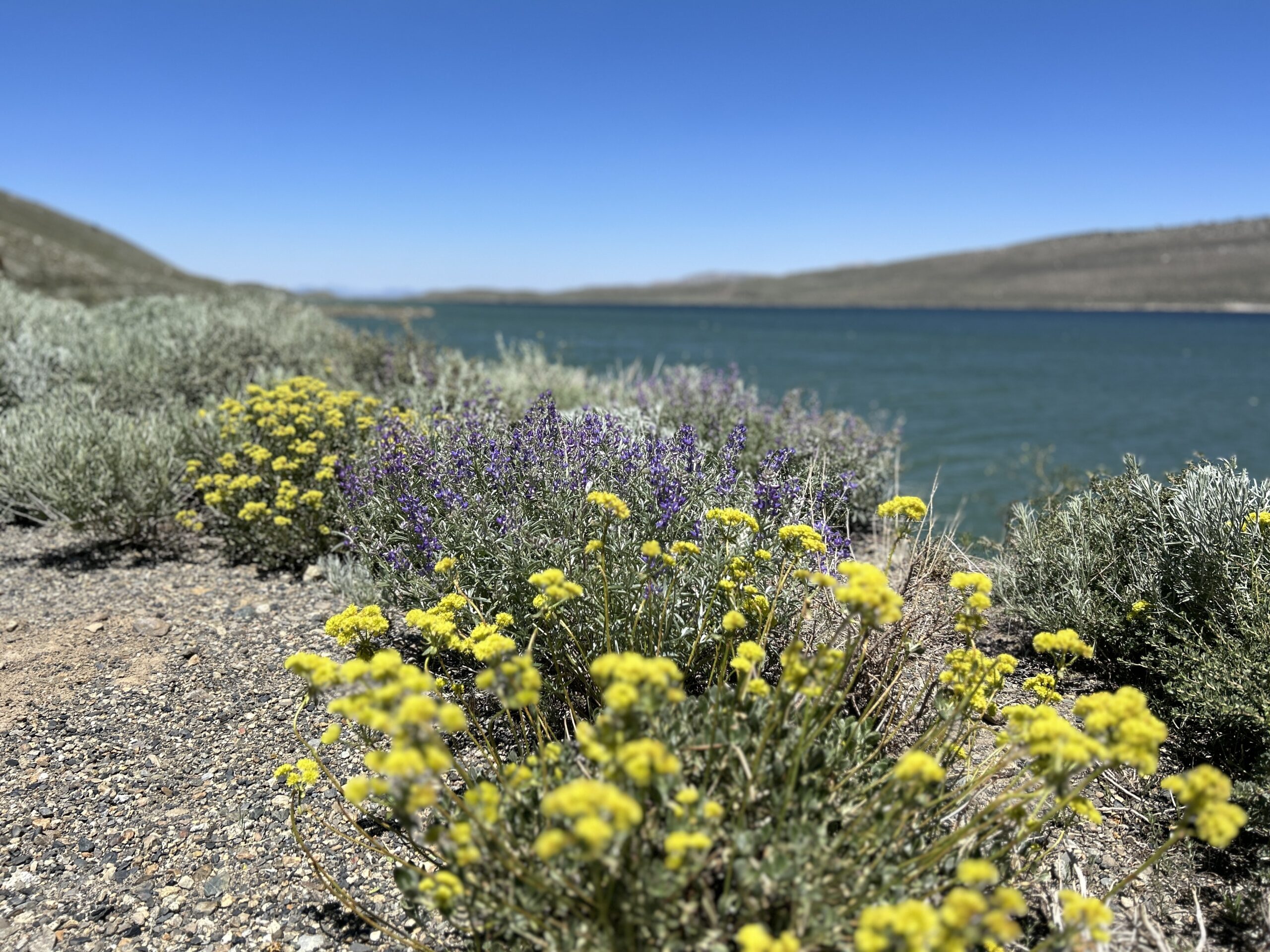It was a very wet winter in California, but perhaps nowhere more so than the Eastern Sierra—proportionally speaking. Bishop, an arid Inyo County town of about 7,000 people, got more than 14 inches of rain, which represents 300% of its total in a typical year.
Consequently, the flowers are blooming, and the Sierra Nevada are still full of snow.
Even as spring gives way to summer, the string of towns and resort communities along Interstate 395 between Reno and the Antelope Valley in northern Los Angeles County is green and lush at a time when most of California’s landscape is baking to a golden hue. The route includes famous skiing locales like Mammoth Lakes and extends down to Lone Pine, the backpacker-filled gateway to Mount Whitney.
On the June Lake Loop, a scenic detour lined with A-frame vacation homes and all-weather resorts, nights are still cold even when they’re short. Snowmelt has been so intense that some driveways have become de facto sluiceways, but all that water has caused spectacular waterfalls and swollen creeks. At 7,000 to 8,000 feet in elevation, mule’s ears and lupines carpet the hillsides.
According to Liz Grans, Mono County’s economic development manager (and film commissioner), it’s normal for the mountains to explode with color in June, but this year is special.
“They’re extra bountiful and vibrant,” she told The Standard. “With all the water from snowmelt and recent thunderstorms, there are more flowers, they are a bit fuller and healthier, and the other plants like sagebrush are greener, adding to the bright, beautiful colors.”
While many superblooms are evanescent in nature, the Eastern Sierra’s flowers are forecast to last a while. As the snowline shifts higher and higher, more plants will wake up and bud. Just remember: Ecosystems are fragile, and it’s best to appreciate superblooms from afar, or at least without trampling.
